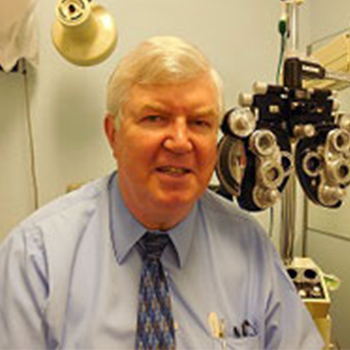Let’s begin with “Myopia.” Exactly what is it? Myopia is the medical term for “nearsightedness,” a condition affecting nearly three million Americans a year, where a refraction error of the cornea hinders light to bend properly, making objects far away appear blurry. While this condition is technically chronic, recent advancements in the eye industry have made it possible for people with low Myopia to temporarily correct their vision through a process called Orthokeratology, or “Ortho-k.”
Orthokeratology—What is It?
Orthokeratology is a form of reversible, refractive correction involving the overnight use of gas-permeable contact lenses to reshape the contour of the cornea while you sleep. These oxygen-intense, “breathable” lenses work to temporarily reverse the effects of Myopia during the night so the wearer can experience clear vision the following day—without the use of glasses or contacts. Ortho-k is used primarily to slow the progression of mild Myopia in adults and children, although it can aid in the temporary correction of low-degree astigmatism, hyperopia, and presbyopia as well.
The Orthokeratology Process
Orthokeratology involves a three-step process: 1) the initial examination, where your optometrist or ophthalmologist will use a Topograph to determine the refraction error of the cornea, 2) the fitting, which may happen on the same day, where your eye care professional will select a series of up to three strengths of custom Ortho-k prescription contacts, and 3) the one-to-two-week treatment phase where candidates use their prescription contacts while sleeping for at least six to eight consecutive hours each night.
Candidates will wear disposable soft lenses or glasses throughout the day during the correction phase. On completion of the treatment, only the prescribed overnight contacts need to be worn. Occasionally, candidates experience mild glaring and haloes around bright light. Remember, there is always the risk of infection without proper eye and lens care, so practice good hygiene and schedule routine follow-up eye appointments!
Why Choose Orthokeratology?
For those with mild or moderate Myopia, Ortho-k is a great option, especially for sports-related activities or when working in environments containing debris or dust. Ortho-k can also be an effective pre-LASIK treatment that can temporarily stall the need for corrective eye surgery. In addition, the fast, painless and safe process makes Ortho-k a practical solution for children who have Myopia.
How Costly is Ortho-k?
Unfortunately, most insurances do not cover the total cost of Ortho-k. Additionally, costs will vary depending on your eye doctor and your unique prescription. The general, two-set lens and appointment package can range anywhere from $900 to $1,800.
Am I a Candidate for Ortho-k?
The best candidates for Orthokeratology are children between the ages of eight and 12 who have progressive Myopia. If early stages of nearsightedness are caught soon enough, Ortho-k can sometimes help with restoring vision in children, because the custom lenses “mold” the eyes overnight to hinder or encourage the growth of cells. Ortho-k also works well with adolescents and young adults with mild or moderate Myopia, or for adults under the age of 40 who aren’t interested in LASIK or other eye corrective surgery. If you suffer from Dry Eye Syndrome or have severe Myopia, Ortho-k is not recommended.
Ask Your Doctor
If you have questions or concerns about Ortho-k, schedule an appointment with your eye care professional. He or she will be able to help you determine your candidacy, costs, benefits, and risks of the process.


